Says Industry Has Responded To Call To Action
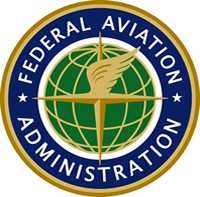 The Federal Aviation
Administration says the US aviation community has initiated and
completed significant short-term actions to improve safety at US
airports... but also notes recent close calls at some of the
nation’s busiest airports show further action must be taken
to reduce the risk of runway incursions and wrong runway
departures.
The Federal Aviation
Administration says the US aviation community has initiated and
completed significant short-term actions to improve safety at US
airports... but also notes recent close calls at some of the
nation’s busiest airports show further action must be taken
to reduce the risk of runway incursions and wrong runway
departures.
Led by Acting FAA Administrator Bobby Sturgell, more than 40
aviation leaders from airlines, airports, air traffic control and
pilot unions, aerospace manufacturers, agreed on August 15 to an
ambitious plan focused on solutions in cockpit procedures, airport
signage and markings, air traffic procedures, and technology.
The following is a summary, released by the FAA Wednesday, of
what the agency considers to be the aviation industry’s
short-term accomplishments. Work continues on mid- and long-term
goals.
Upgrade Airport Markings at Medium and Large Airports
Action: All airports with more than 1.5 million
enplanements to voluntarily accelerate the enhancement of new
markings that were originally required by the FAA by June 30,
2008.
Status: As of today, 53 of the targeted 75
airports have completed painting, 18 airports are planning to
complete enhanced markings by the end of the year, and 4 have
committed to complete the upgrade prior to the deadline. Regional
offices continue to track the progress with airport sponsors and
provide assistance.
Upgrade Airport Markings at Smaller Airports
 Action: All airports
certificated under Part 139 to develop plans to voluntarily upgrade
existing markings, even though it is not required.
Action: All airports
certificated under Part 139 to develop plans to voluntarily upgrade
existing markings, even though it is not required.
Status: As of today, 28 airports have upgraded
their markings, 50 airports plan to complete the work by the end of
the year, 173 airports plan to upgrade markings by June 2008, 29
airports plan to enhance markings in 2009, and 28 airports have
expressed interest but have not yet provided a target completion
date. This means 308 airports are at some stage in voluntarily
adopting the enhanced markings, and we expect that number to
increase. Regional offices continue to track the progress with
airport sponsors and provide assistance.
The FAA is taking steps to propose extending the enhanced
taxiway centerline requirement to all certificated airports. A
draft change to Advisory Circular (AC) 150/5340-1J, Standards for
Airport Markings, was published in late December 2007. Comments are
due by February 26, 2008. The change to the AC would adopt the
enhanced markings as standard signage at all certificated airports.
Further decisions will be made after the agency has the opportunity
to review the comments the public and industry comments.
Airport Surface Analysis
Action: Complete a runway safety review of 20
airports based on runway incursion data and wrong runway departure
data.
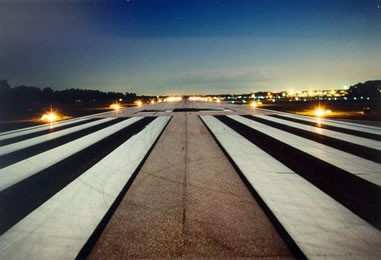
Status: Reviews of all 20 airports are complete
and have resulted in more than 100 short-term and numerous mid- and
long-term initiatives. Many of the short-term initiatives
identified have already been completed. The agency has evaluated
lessons learned from the initial surface analysis and have modified
the format for future Runway Safety Action Team (RSAT) meetings and
incorporated evaluation of the wrong runway risk factors identified
by the Commercial Aviation Safety Team (CAST) into the RSATs. We
are currently evaluating the next tier of airports to be included
in the “Call to Action” surface analysis effort. The
first tier included:
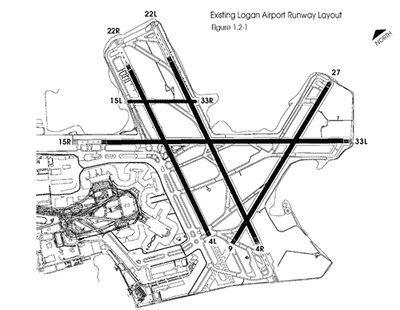
- Atlanta: Hartsfield-Jackson Atlanta International
- Atlanta: Dekalb Peachtree
- Boston: Logan International
- Chicago: O’Hare International
- Dallas: Dallas/Ft. Worth International
- Denver: Denver International
- Ft. Lauderdale: Ft. Lauderdale-Hollywood International
- Las Vegas: McCarran International
- Las Vegas: North Las Vegas
- Long Beach: Long Beach/Daugherty Field
- Los Angeles: Los Angeles International
- Miami: Miami International
- Milwaukee: General Mitchell International
- New York: John F. Kennedy International
- Orlando: Orlando International
- Philadelphia: Philadelphia International
- Reno: Reno-Tahoe International
- San Francisco: San Francisco International
- San Jose: Norman Y. Mineta San Jose International
- Santa Ana: John Wayne Airport (Orange County) Santa Ana
Airport Recurrent Training
Action: All other certificated airports to
voluntarily develop plans to require annual recurrent training to
all individuals with access to movement area.
Status: All of the 569 certificated airports in
the United States require initial and recurrent training for
airport employees such as airport police and airport maintenance
workers. As a result of the Call To Action, there are now 385
airports that now require recurrent training for non-airport
employees such as Fixed-Based Operators or airline mechanics.
Additionally, 97 airports plan to adopt this requirement. Regional
offices continue to track the progress with airport sponsors and
provide assistance.
The Office of Airport Safety and Standards issued a draft change
to AC 150/5210-20, Ground Vehicle Operations on Airports, in late
December 2007. Public comments are due by February 26, 2008. The
draft AC strongly recommends regular recurrent driver training for
all persons with access to the movement area and ramp apron
areas.
Air Carrier Pilot Training
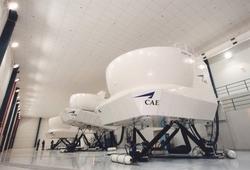 Action: Air
carriers to provide pilots with simulator or other training that
incorporates realistic scenarios from pushback through taxi.
Action: Air
carriers to provide pilots with simulator or other training that
incorporates realistic scenarios from pushback through taxi.
Status: Of the 112 active air carriers, all
have reported that they are in compliance.
Air Carrier Cockpit Procedures
Action: Air carriers to review cockpit
procedures to identify and develop a plan to address elements that
contribute to pilot distraction during taxi.
Status: Of the 112 active air carriers, all
have reported that they are in compliance.
Air Carrier Employee Training
Action: Air carriers to establish mandatory
recurrent training for non-pilot employees who operate aircraft or
vehicles on the airfield.
Status: The FAA reviewed existing videos,
posted FAA Notice No. 0988 containing visual depictions
(FAASafety.gov), and is developing a new DVD to be distributed to
air carriers to be used in training programs.
Air Traffic Taxi Clearances
Action: Review current policies for issuing
taxi clearances, conduct a safety risk analysis of a procedure to
issue specific taxi instructions for each operation.
Status: The FAA has completed an analysis of
ATC procedures pertaining to taxi clearances and found that more
explicit taxi instructions are needed. The FAA has forwarded
preliminary results to stakeholders for a 30-day review. An
analysis of Multiple Landing Clearances has begun.
FAA Air Traffic Organization (ATO) Voluntary Reporting
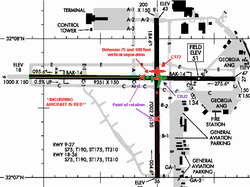 Action: Work
with labor unions on an Aviation Safety Action Program (ASAP) for
air traffic controllers. ASAP is already used successfully by 67
air carriers to encourage voluntary reporting of safety by pilots,
dispatchers, flight attendants or mechanics.
Action: Work
with labor unions on an Aviation Safety Action Program (ASAP) for
air traffic controllers. ASAP is already used successfully by 67
air carriers to encourage voluntary reporting of safety by pilots,
dispatchers, flight attendants or mechanics.
Status: A partnership agreement between the FAA
and the National Air Traffic Controllers Association (NATCA) was
recently signed. The agreement covers all ATO employees. The FAA
and NATCA will work together to develop and implement the voluntary
reporting system.
Next Steps
On January 15, Sturgell convened a teleconference with the chief
executive officers of US commercial carriers to reinforce the need
for improved pilot training and cockpit procedure, citing concern
over recent high-visibility runway safety events. Sturgell called
for meetings with all carriers and top FAA safety officials to take
place by Friday, January 25. The meetings will include each
airline’s director of operations, director of safety and
chief pilot and will examine ways to enhance situational awareness
on the runway.
A runway incursion is an incident on a runway involving an
aircraft, vehicle, person, or object that creates a collision
hazard or results in loss of required separation with an aircraft
preparing to take off or land. In 2007, there were 24 serious
runway incursions (A&B events), eight of which involved
commercial air carriers.
 ANN's Daily Aero-Linx (05.06.25)
ANN's Daily Aero-Linx (05.06.25) ANN's Daily Aero-Term (05.06.25): Ultrahigh Frequency (UHF)
ANN's Daily Aero-Term (05.06.25): Ultrahigh Frequency (UHF) ANN FAQ: Q&A 101
ANN FAQ: Q&A 101 Classic Aero-TV: Virtual Reality Painting--PPG Leverages Technology for Training
Classic Aero-TV: Virtual Reality Painting--PPG Leverages Technology for Training Airborne 05.02.25: Joby Crewed Milestone, Diamond Club, Canadian Pilot Insurance
Airborne 05.02.25: Joby Crewed Milestone, Diamond Club, Canadian Pilot Insurance








